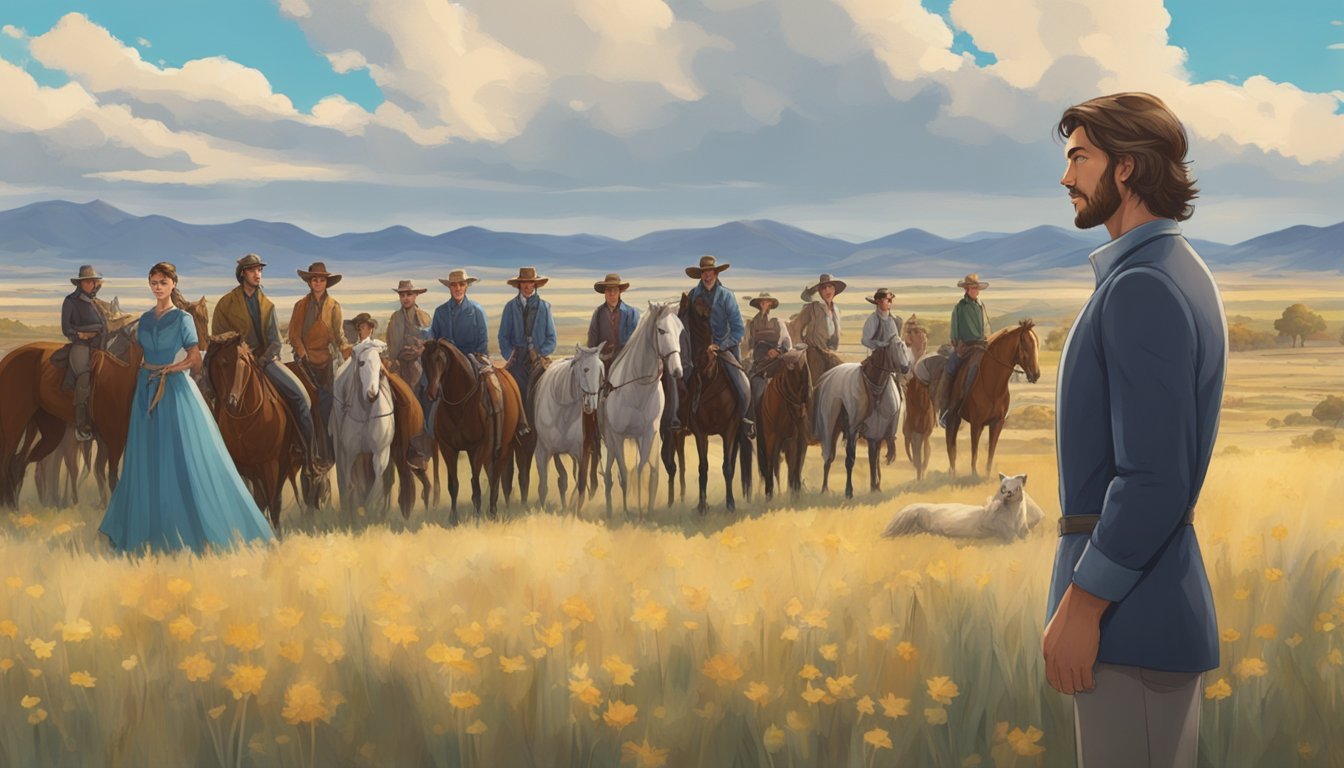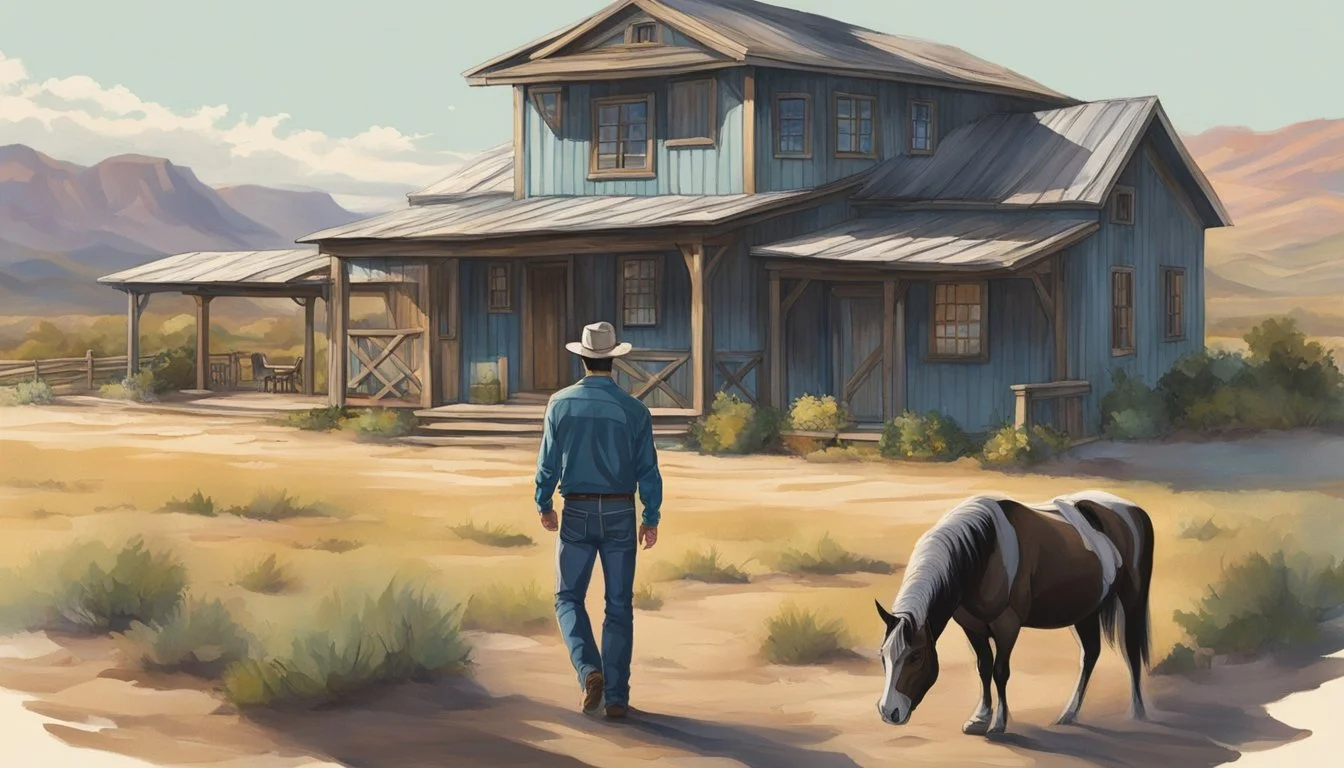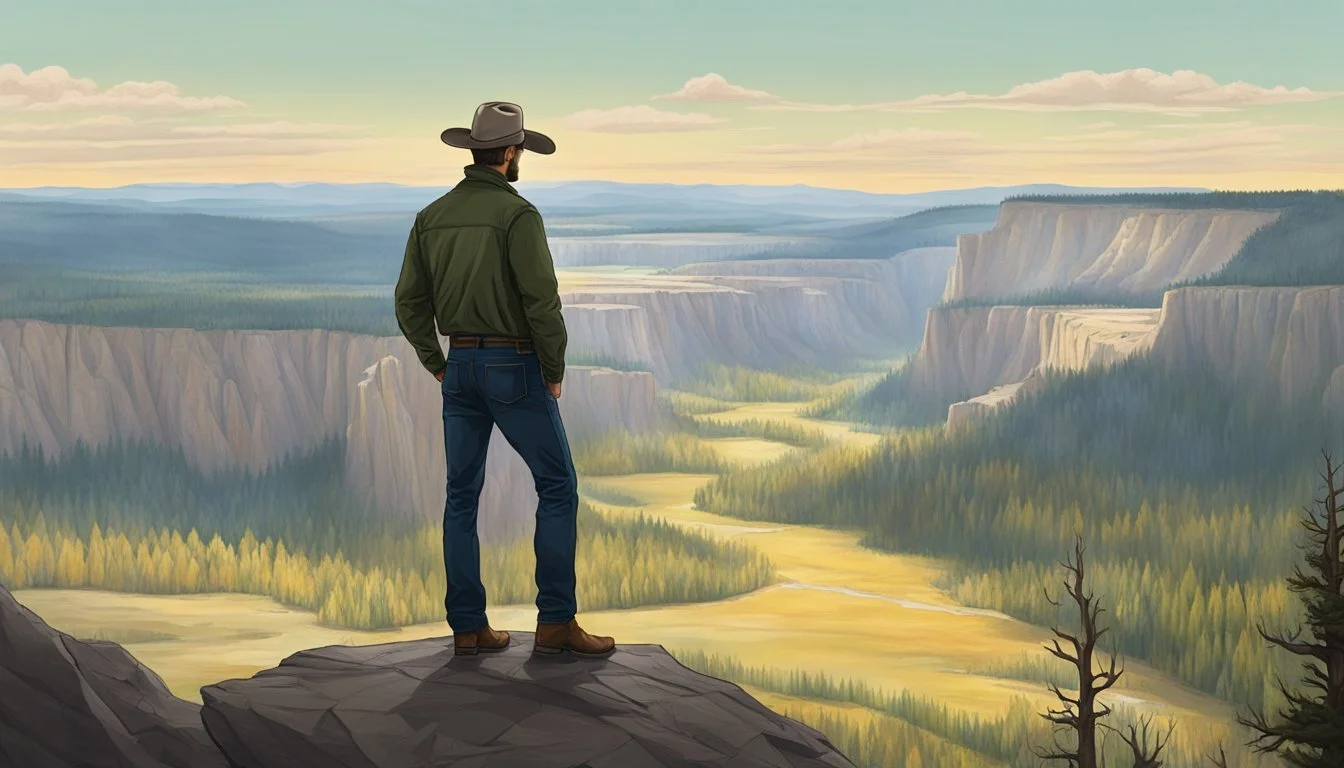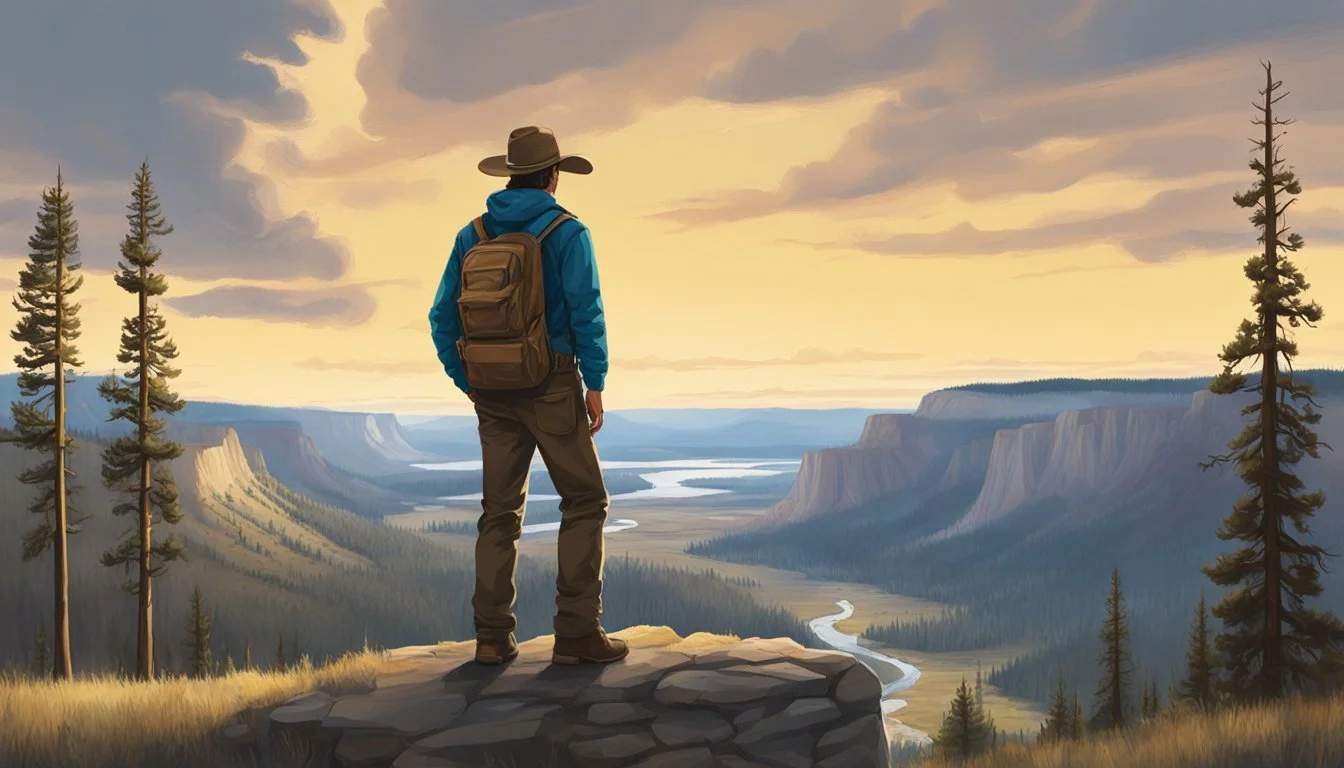Kayce Dutton's Character Arc in Yellowstone: From Outsider to Heir Apparent
A Transformative Journey
Kayce Dutton's journey in Yellowstone is a compelling tale of transformation. As the youngest son of ranching tycoon John Dutton, Kayce begins the series as an outsider to his family's legacy. His military background and complex relationship with his father initially set him apart from the ranch's operations.
Throughout the series, Kayce evolves from a reluctant participant to a key player in the Dutton family's struggles to maintain control of their vast Montana ranch. Luke Grimes portrays Kayce with a nuanced blend of toughness and vulnerability, capturing the character's internal conflicts as he navigates family loyalty, personal ambitions, and the harsh realities of ranch life.
Taylor Sheridan's masterful storytelling in Yellowstone gradually positions Kayce as a potential heir to the Dutton empire. The character's growth is marked by pivotal moments that test his resolve and force him to confront his place within the family legacy. As the series progresses, viewers witness Kayce's increasing involvement in ranch affairs and his father's business, solidifying his role as a central figure in the Dutton dynasty.
Character Background and Development
Kayce Dutton's journey in Yellowstone is shaped by his complex past and family dynamics. His experiences as a Navy SEAL, relationship with the Dutton family, and connection to Native American culture all play crucial roles in his character development.
Early Life and Military Service
Kayce John Dutton was born on April 24, 1990, in Paradise Valley, Montana. As the youngest son of John and Evelyn Dutton, he grew up on the Yellowstone Ranch.
Kayce's childhood was marked by tragedy when his mother Evelyn died in a horse riding accident. This loss deeply affected the family dynamics.
Seeking purpose and direction, Kayce joined the Navy and became a SEAL. His military service provided him with valuable skills and discipline, but also left him with emotional scars.
Introduction to the Dutton Family
Upon returning to civilian life, Kayce's relationship with his father John was strained. Their conflicting views on the ranch's future and family loyalty created tension.
Kayce married Monica, a Native American woman, and they had a son named Tate. This further complicated his position within the Dutton family.
Initially living away from the ranch, Kayce gradually became more involved in family affairs. His unique perspective and military background proved valuable in protecting Dutton interests.
Kayce's Navajo Connection
Kayce's marriage to Monica deepened his connection to Native American culture, particularly the Navajo traditions. This relationship provided him with a different worldview.
His time spent on the reservation exposed him to alternative ways of life and spiritual beliefs. These experiences often conflicted with the Dutton family's ranching lifestyle.
Kayce's dual identity as both a Dutton and an honorary member of the Native American community created internal conflicts. It also allowed him to serve as a bridge between two often opposing worlds.
Key Relationships and Alliances
Kayce Dutton's character arc is heavily influenced by his relationships with family members and key allies on the Yellowstone ranch. These connections shape his journey and decisions throughout the series.
Marriage with Monica Dutton
Kayce's relationship with Monica is a cornerstone of his character development. Their marriage faces numerous challenges, including cultural differences and family conflicts. Monica, a Native American teacher, often struggles with the violent world of the Duttons.
The couple's bond is tested by separations and reconciliations. Their son Tate becomes a focal point, with both parents striving to protect him from the dangers surrounding the ranch. Kayce's efforts to balance his duties to the Dutton family with his commitment to Monica and Tate create ongoing tension.
Dynamic with John Dutton III
Kayce's relationship with his father John is complex and evolving. Initially estranged, Kayce gradually becomes more involved in ranch operations. John sees Kayce as a potential heir to the Yellowstone, despite their past conflicts.
Their bond strengthens as Kayce proves his loyalty and capability in handling ranch affairs. John begins to trust Kayce with important tasks and decisions. This growing closeness, however, sometimes puts strain on Kayce's other relationships, especially with Monica.
Sibling Rivalries and Beth Dutton
Kayce's interactions with his siblings, particularly Beth, are marked by a mix of loyalty and conflict. Beth is fiercely protective of Kayce, often acting as his staunchest defender within the family.
Their relationship is characterized by Beth's sharp wit and Kayce's more reserved nature. While they share a strong sibling bond, they frequently clash over family matters and ranch decisions. Beth's intense personality sometimes overwhelms Kayce, but he values her unwavering support.
Bonding with Rip Wheeler
Kayce's relationship with Rip Wheeler evolves from initial tension to mutual respect. As John Dutton's right-hand man, Rip initially views Kayce as a potential threat to his position on the ranch.
Over time, they develop a strong working relationship and friendship. Kayce comes to appreciate Rip's loyalty and skills, while Rip recognizes Kayce's leadership abilities. Their bond is strengthened through shared experiences in protecting the ranch and navigating the challenges of Yellowstone life.
Struggles and Personal Conflict
Kayce Dutton faces numerous challenges that shape his character arc throughout Yellowstone. His journey is marked by internal battles and external pressures that test his resilience and values.
Dealing with PTSD
Kayce's military background leaves him with deep psychological scars. His experiences as a Navy SEAL haunt him, manifesting as PTSD symptoms that impact his daily life. Nightmares and flashbacks plague him, often causing erratic behavior and emotional outbursts.
These struggles affect his relationships, particularly with his wife Monica and son Tate. Kayce's efforts to manage his PTSD become a central part of his character development.
His journey involves seeking help and learning coping mechanisms to navigate civilian life while carrying the weight of his past traumas.
The Loss and Mourning of Family Members
The death of Lee Dutton, Kayce's older brother, profoundly affects him. This loss intensifies the family dynamics and adds to Kayce's emotional burden.
Kayce grapples with guilt and grief, questioning his role in the family and his ability to protect those he loves. The mourning process influences his decisions and relationships within the Dutton clan.
His father John's expectations and the family legacy become more pressing in Lee's absence, pushing Kayce to confront his responsibilities to the Yellowstone ranch.
Internal and External Conflicts
Kayce's internal conflicts stem from his desire for a peaceful life and his duty to the Dutton family. He struggles to balance his roles as a husband, father, and heir to the Yellowstone ranch.
Externally, Kayce faces threats from rival ranchers, land developers, and political adversaries. These conflicts often force him to choose between violence and diplomacy.
His Native American heritage adds another layer of complexity, as he navigates between two cultures. This dual identity creates tension in his relationships and decision-making processes.
Cultural Identity and Influence
Kayce Dutton's character is deeply shaped by his connections to Native American culture and the Broken Rock Reservation. His experiences and relationships with the indigenous community profoundly impact his worldview and decision-making.
Relationship with Broken Rock Reservation
Kayce's marriage to Monica, a member of the Broken Rock Reservation, creates a unique bridge between two worlds. This connection exposes him to the challenges faced by the Native American community. Kayce often finds himself caught between his family's interests and those of the reservation.
His role as a mediator becomes crucial during land disputes and conflicts between the Duttons and Broken Rock. These interactions force Kayce to confront his own biases and expand his understanding of tribal issues.
Native American Traditions
Kayce's exposure to Native American traditions transforms his perspective on life and spirituality. He participates in sacred rituals like the Hanbleceya, a vision quest that proves pivotal in his character development.
This experience deepens Kayce's respect for indigenous wisdom and healing practices. He begins to incorporate elements of Native American philosophy into his decision-making process, especially when facing moral dilemmas.
Kayce's growing appreciation for these traditions often puts him at odds with the more pragmatic approach of his father, John Dutton. This tension becomes a recurring theme in Kayce's journey of self-discovery and leadership within the Dutton family.
Ranch Life and Livestock Association
Kayce Dutton's role on the Yellowstone Ranch intertwines with his involvement in the broader Montana ranching community. His responsibilities on the ranch and interactions with the state's Livestock Association shape his character development.
Yellowstone Ranch Responsibilities
Kayce oversees daily operations on the vast Yellowstone Ranch. He manages cattle herds, coordinates ranch hands, and ensures the property's upkeep. His duties include:
Organizing cattle drives
Overseeing breeding programs
Maintaining fences and equipment
Handling livestock health issues
Kayce's military background proves valuable in managing the ranch's security. He protects the Dutton land from threats like cattle rustlers and encroaching developers.
Interaction with Montana Livestock Association
As a prominent rancher, Kayce engages with the Montana Livestock Association. This organization plays a crucial role in:
• Advocating for ranchers' interests • Addressing land use conflicts • Promoting sustainable ranching practices
Kayce attends meetings and participates in policy discussions. His involvement helps protect the Dutton family's interests and strengthens their influence in the ranching community.
Through these interactions, Kayce gains a deeper understanding of the challenges facing modern ranchers. This knowledge proves essential as he navigates the complex world of Montana's agricultural politics.
Journey to Leadership
Kayce Dutton's transformation from a reluctant family member to a potential heir of the Yellowstone Ranch is marked by significant personal growth and pivotal events. His path to leadership involves overcoming internal conflicts, embracing his familial responsibilities, and navigating complex challenges.
Evolution from Outsider to Heir
Kayce's initial distance from the Dutton family dynamics gradually shifts as he becomes more involved in ranch operations. His military background and strong moral compass make him a unique asset. Kayce's leadership qualities emerge as he takes on increasing responsibilities, from managing ranch affairs to handling sensitive family matters.
His role in protecting the ranch from external threats solidifies his position within the family hierarchy. Kayce's ability to balance his personal ethics with the often-ruthless demands of preserving the Dutton legacy sets him apart as a potential future leader.
Season 4 and Season 5 Milestones
Season 4 sees Kayce stepping up in the aftermath of attacks on the Dutton family. He takes a more active role in ranch management and political maneuvering. His appointment as Livestock Commissioner further cements his importance to the family's interests.
In Season 5, Kayce's leadership skills are put to the test. He faces difficult decisions that impact both his immediate family and the larger Dutton empire. His growing influence in state politics and ability to navigate complex alliances demonstrate his readiness for a larger role.
Visions, Decisions, and Counting Coup
Kayce's spiritual journey, including his vision quest, plays a crucial role in his development as a leader. These experiences provide him with deeper insights and guide his decision-making process.
The concept of "counting coup" becomes significant in Kayce's approach to leadership. This traditional Native American practice of proving bravery influences his strategies in dealing with adversaries and protecting the ranch.
Kayce's decisions increasingly reflect a balance between personal integrity and the greater good of the Dutton family. His unique perspective, shaped by his experiences both on and off the ranch, positions him as a potential heir capable of leading the Yellowstone into a new era.
Symbolism and Representation
Kayce Dutton's character embodies deep symbolism within the Yellowstone universe. His journey represents broader themes of cultural unity and the evolving nature of the modern American West.
Kayce as a Symbol of Unity
Kayce bridges multiple worlds, symbolizing the potential for unity in a divided landscape. His Native American wife and mixed-race son connect him to indigenous culture, while his Dutton heritage ties him to ranching traditions. This unique position allows Kayce to navigate conflicts between different groups.
The Yellowstone brand on Kayce's chest serves as a powerful symbol. It represents his commitment to the Dutton legacy while also marking him as someone who has experienced personal transformation.
Kayce's military background adds another layer of symbolism. It portrays him as a protector of both his family and the wider community, reinforcing his role as a unifying figure.
Representation of Modern Western Archetypes
Kayce embodies a modern take on classic Western archetypes. He combines the rugged individualism of a cowboy with the discipline of a soldier and the wisdom gained from Native American influences.
His character challenges stereotypes by presenting a complex, multifaceted individual. Kayce's struggles with PTSD and family loyalty showcase the real-world issues faced by many in the contemporary West.
The lone wolf that appears in Kayce's visions symbolizes his internal conflict. It represents his desire for independence while also highlighting his deep connection to the land and its creatures.
Kayce's evolving role within the Dutton family reflects changing power dynamics in the modern West. His journey from outsider to potential heir apparent mirrors broader shifts in regional leadership and values.
Critical Reception and Audience Perspective
Kayce Dutton's character has resonated strongly with Yellowstone viewers. His complex journey and internal struggles have made him a fan favorite, though some aspects of his storyline have drawn mixed reactions.
Portrayal by Luke Grimes
Luke Grimes brings depth and nuance to Kayce Dutton's character. His portrayal captures Kayce's internal conflict between his family loyalty and personal desires. Grimes' subtle performance highlights Kayce's evolution from a reluctant Dutton to a potential heir. Critics have praised his ability to convey Kayce's quiet strength and vulnerability. Grimes' chemistry with co-stars Kevin Costner and Kelsey Asbille adds authenticity to Kayce's relationships.
The actor's commitment to understanding ranch life and Native American culture has enhanced his performance. This dedication has earned him respect from both the audience and his fellow cast members.
Fan Response to Kayce's Arc
Viewers have embraced Kayce as one of Yellowstone's most relatable characters. His struggle to balance family obligations with personal happiness resonates with many fans. Kayce's journey from outsider to potential ranch heir has kept audiences invested in his storyline.
Some fans expressed frustration with Kayce's arc in Season 4, feeling it lacked direction. However, his character development in later seasons has reignited viewer interest. Kayce's vision quest and subsequent decisions have sparked intense online discussions.
Audience polls often rank Kayce as a top favorite character, alongside Beth Dutton. His complex relationships with Monica and the Broken Rock Reservation add depth to the show's narrative.





